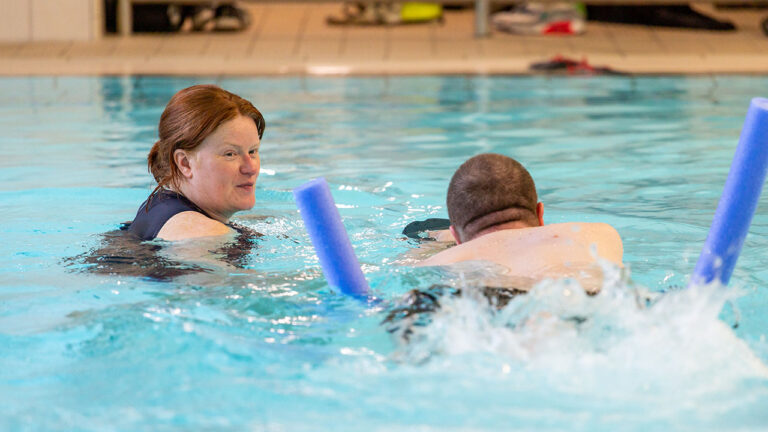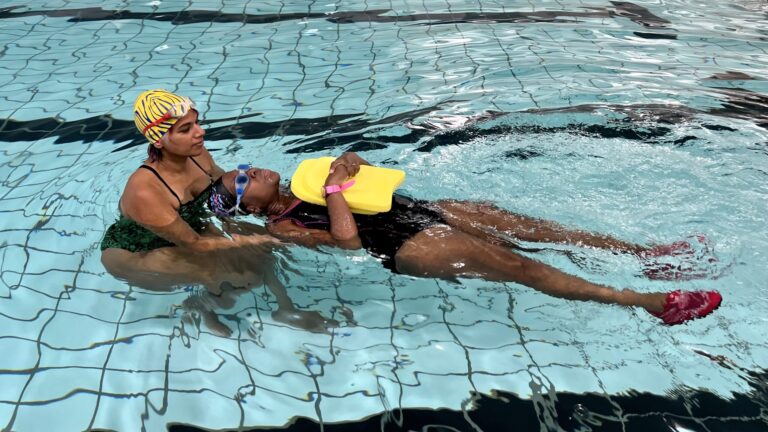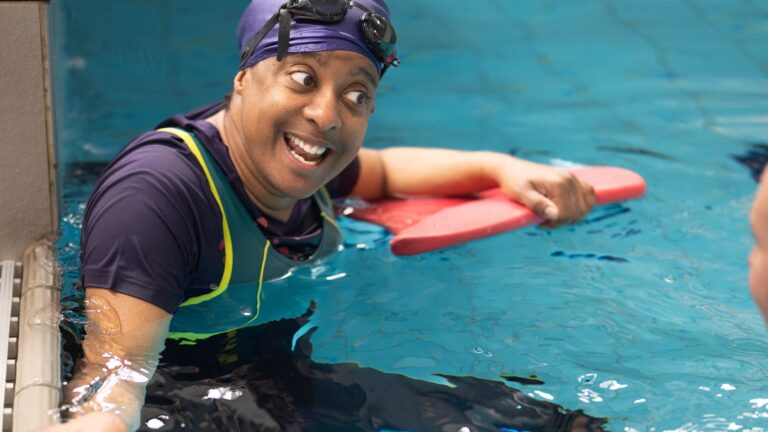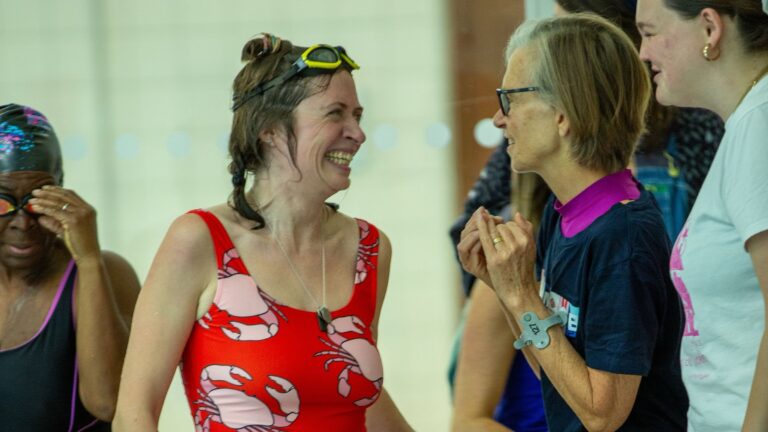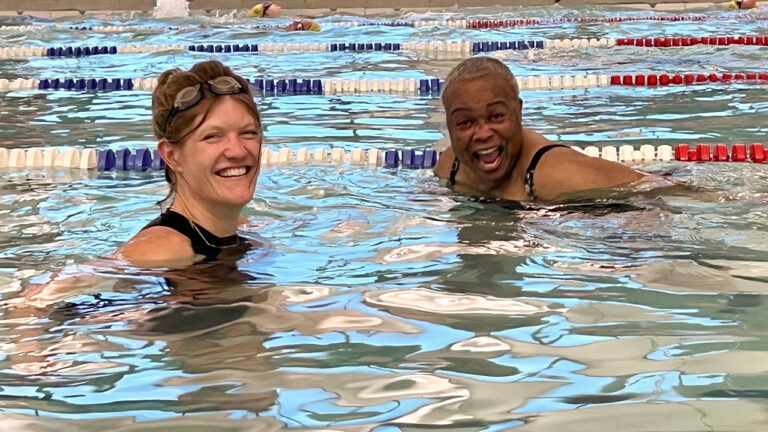Earlier this year, we shared why breathing is important for swimming. Now is the time to practice so that you are ready when pools reopen. Since access to pools is restricted (and please do not take any unnecessary risk in open water or your bathtub), it is impossible to practice the exercises we published back in September at the moment. Whilst our volunteers are looking forward to working on those with you then, you can practice at home instead. Beyond swimming, breathing exercises can also help you feel better in your life both mentally and physically, as they enable you to relax and to improve your lung function.
They only take a few minutes so it’s worth setting aside some time during your day. Even a couple of minutes can make a difference and you can always increase your time as you feel more comfortable. Most people can do these exercises safely as they do not have any risks or complications, but you may want to talk to your doctor before starting the practice if you are unsure, and at least let them know straight away if you experience discomfort like feeling lightheaded, dizzy or nauseous during or after the sessions. It’s best to create a routine, for example by always doing your exercises in the same peaceful and quiet place every day and at the same time. Don’t worry if you are not doing them right or enough. Instead, focus on clearing your mind of the things that may be stressing you out and focus on your senses, breathing and environment.
Pursed Lip Breathing
This first exercise helps to make your breaths more effective, by making them slower and more intentional, which will in turn make it easier to breathe. It’s particularly good for people with lung conditions, for example, asthma and pulmonary fibrosis. One study even found that pursed lip breathing has significantly improved the exercise tolerance, breathing patterns and arterial oxygen of people with Chronic Obstructive Pulmonary Disease (COPD). To practice:
- Sit or lie down, whichever feels more comfortable.
- Relax your body, in particular any tension in your shoulders, but make sure to keep your back straight if you are sitting.
- Inhale through your nose for two seconds so that the air moves all the way into your abdomen.
- Purse your lips like you’re blowing on hot food and exhale slowly for four seconds.
- Repeat the same pattern until you feel comfortable.
Over time, you can increase the inhale from two seconds to four seconds. Remember to take twice as long to exhale as you took to breathe in.
Diaphragmatic Breathing
Also called belly or abdominal breathing, this exercise helps strengthen your diaphragm – a muscle that helps you breathe. Diaphragmatic breathing is at the centre of the practice of meditation and is recommended for a wide range of conditions like irritable bowel syndrome, depression and anxiety, sleeplessness, post-traumatic stress disorder (PTSD) and again COPD. This is because diaphragmatic breathing has multiple benefits all around your body from lowering your heart rate and your blood pressure and even reducing your risk of muscle injury, all together with reducing your stress. Deep breathing techniques like this are however sometimes more effective when combined with other techniques like cognitive-behavioural therapy or hypnotherapy for people with mental health conditions. To do this exercise, follow the steps:
- Sit or lie down in a comfortable position on a flat surface.
- Relax your body, especially your shoulders.
- Put a hand on your chest and the other one on your stomach.
- Breathe in through the nose for two seconds, feeling the air moving through your nostrils all the way into your abdomen. Your stomach expands as you can feel with your hand.
- Now purse your lips as if you were about to drink through a straw and press on your stomach with your hand to whale for two seconds.
- Repeat the above steps as long as you need to feel relaxed.
Coordinated Breathing
This exercise can help you prepare for better coordination between your breathing and your arm movement when you get back in the water as it gets you thinking about when to breathe in and out. It’s also a good technique to use when you do a workout as it is usually recommended to breath out through the mouth during the most strenuous part of the exercise. To coordinate your breaking with an arm movement for instance:
- Inhale out before beginning the movement. Note that if you want to mimic breathing while swimming, you should use your mouth and not your nose.
- Purse your lips and breath out through your mouth while curling upward on a biceps curl.
- Breathe in as you extend your arm, and repeat from step 2.
With these exercises, you will not only feel more relaxed but also work on your lung function and coordination. If you want additional exercises for relaxation, check out those 10 breathing techniques. Overall, working on your breathing sets a good foundation for swimming and wellbeing. Tell us in the comments if you have included breathing as part of your daily routine.

